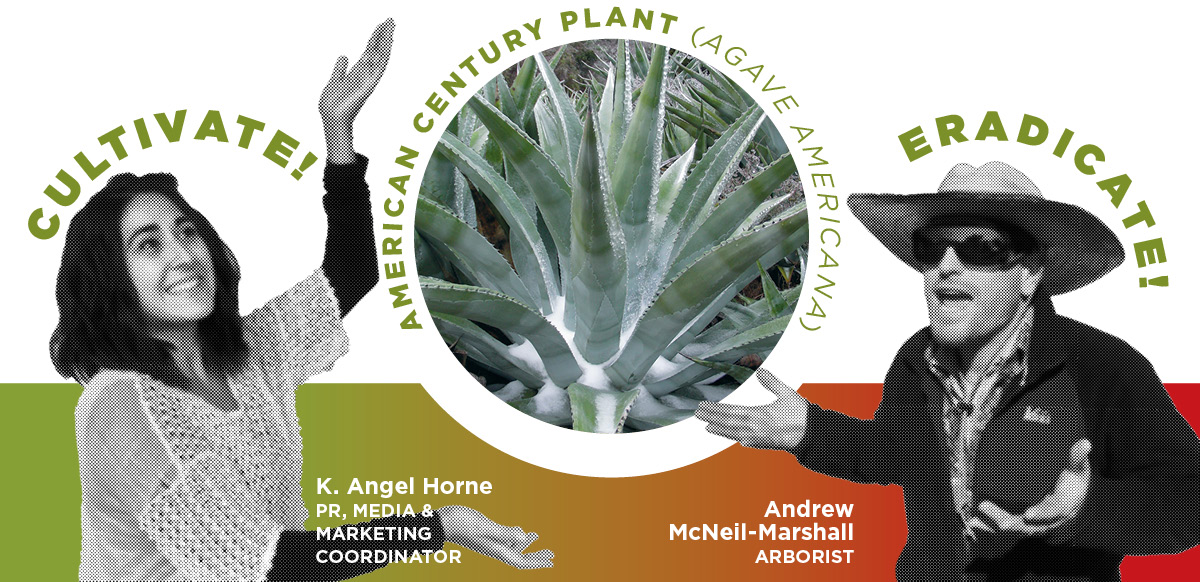Pull It or Plant It: American Century Plant

KAH: Not many species make the news for positive reasons, but American century plant is a leviathan headline-maker. Garfield Park Conservatory in Chicago held a (sold out) party to celebrate the blooming of its 50-year-old Agave americana, named Maya. An eruption of blooms atop a telephone-pole-tall stalk, decades in the making? Newsworthy.
And there’s nothing more beautiful than a drought-tolerant, wildlife-supporting plant in a climate like ours. I have to give props to any plant that not only survives in the harshest landscapes but manages to thrive and provide shelter and sustenance for a variety of fauna in the process. The towering blooms of this cyanic evergreen agave are basically goblets of nectar for struggling bat populations.
While they may not have a high rate of successful sexual reproduction through seed dispersal, there’s something deeply poetic about a plant that prolifically reproduces asexually (through “pups”) yet sustains genetic diversity through a spectacular, once-in-a-lifetime bloom. Sure, those spiky tips are not fun to stumble into, but that’s what makes it protective habitat for small animals.
AMM: Agave americana is a sloppy, unruly, spreading plant that can easily and quickly outgrow its intended space. Suckers from the base eventually expand this footprint farther, Probably ad infinitum. And its long, sharp, hard and unpliable spikes can inflict serious damage at leg, torso and eye level.
This plant is a maintenance nightmare in any but the most hands-off landscape. In life, its lower leaves will deteriorate and need to be removed — a painful and dangerous exercise. Sucker removal, unless done frequently, also requires a lot of work and can ruin clothes with bloodstains and tears (read “tears” either way). In death, the plant is an ugly mess with a giant, unwieldy stalk protruding from the center. Do you really want to plant something that only lives for about 30 years (on average) before needing time- and labor-consuming removal?
Agaves are a lazy horticultural choice that can easily be replaced with more graceful, interesting plants such as cenizo, sotol or one of the softer-leaved yuccas. If you must plant one, try A. havardiana or A. parryi ssp. neomexicana, which have the positive aspects without the absurd appearance.
ON THE OTHER HAND …
AMM: The Agave genus has been in cultivation for as long as 10,000 years, meaning that when we plant agaves we are participating in an ancient horticultural and agricultural practice that goes back forever. Highly interesting.

